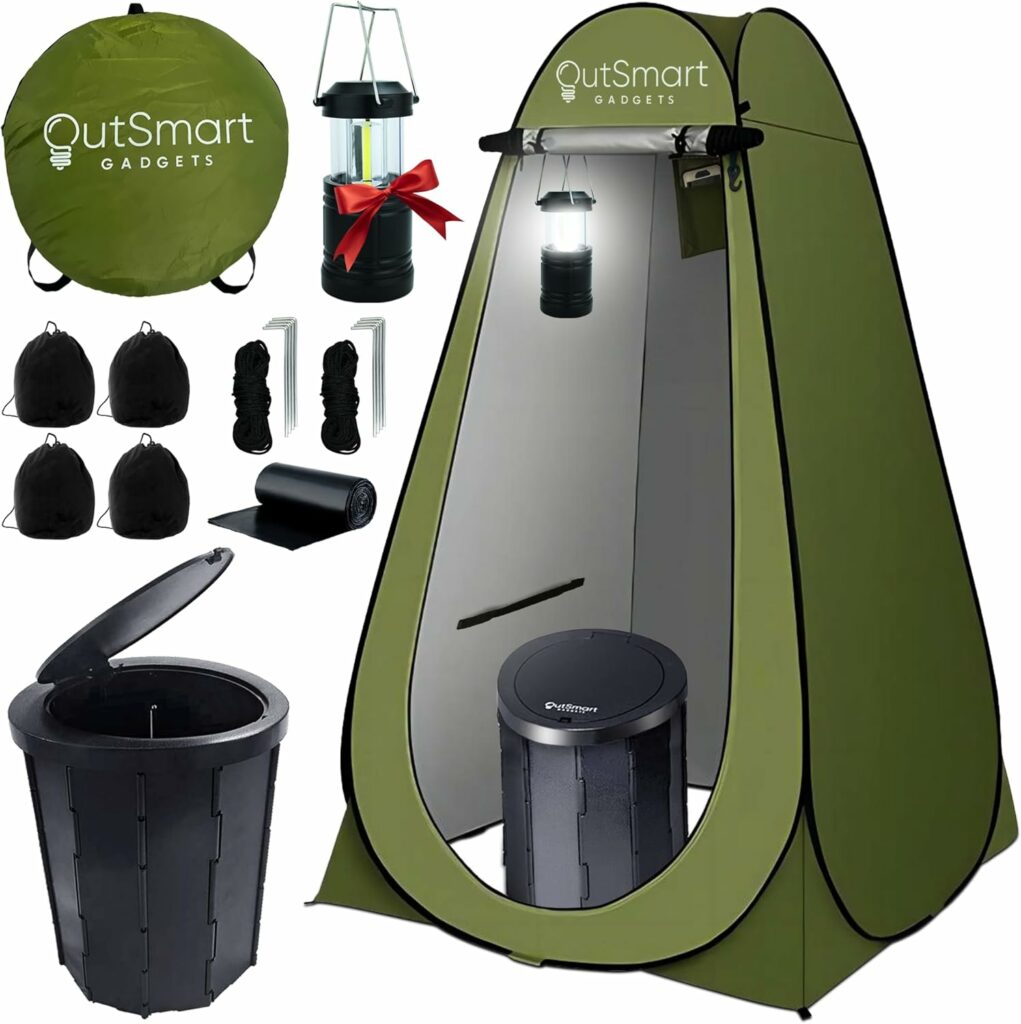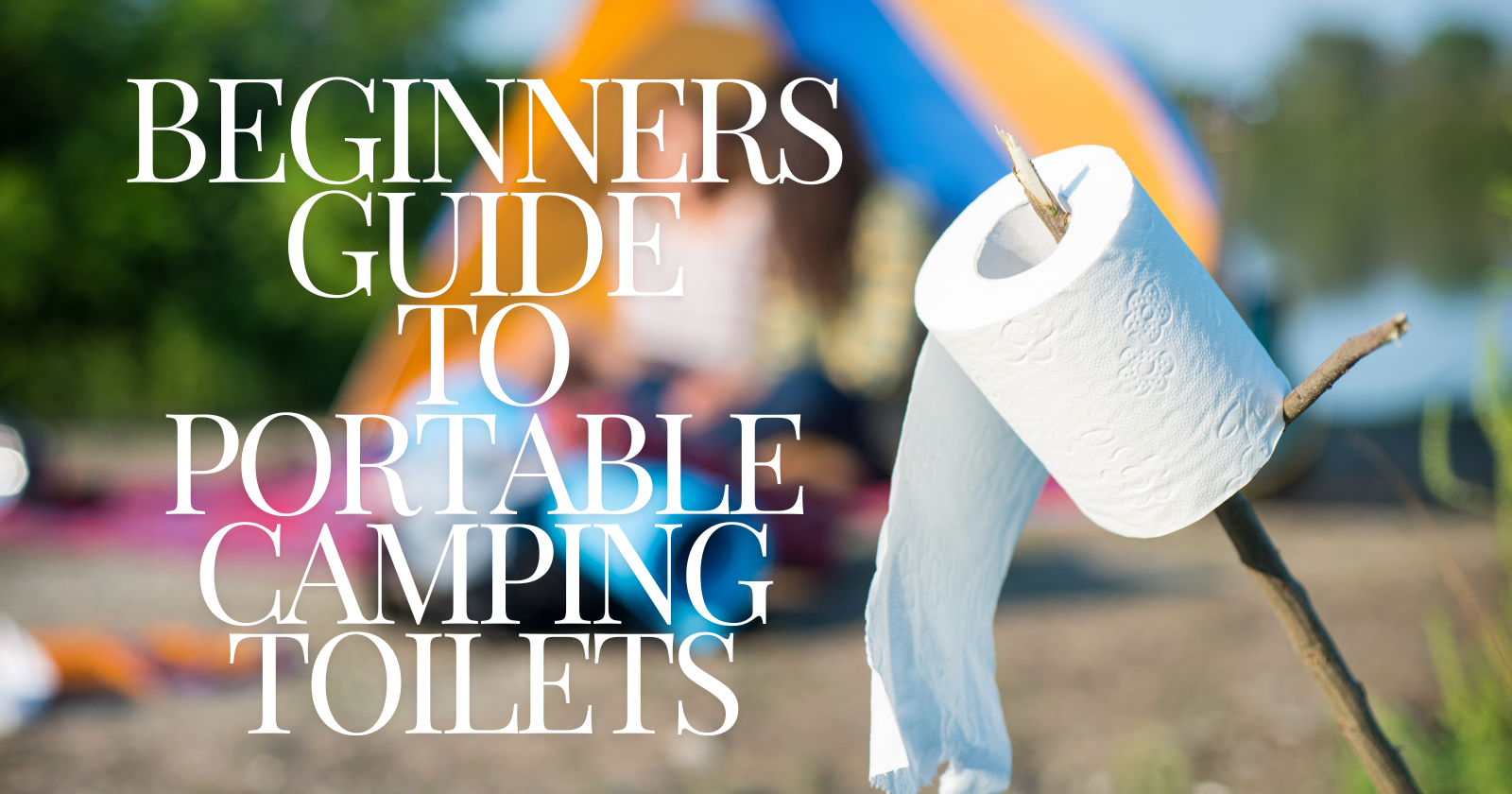
When it comes to camping, nature offers us all the beauty and serenity we crave—but it also presents some practical challenges, especially when it comes to answering nature’s call.
Enter the portable camping toilet, the unsung hero of outdoor adventures. Whether you’re a seasoned camper or just starting your journey into the wild, having a reliable and easy-to-use portable toilet can make all the difference between a great trip and one that’s a little rough around the edges.
In this guide, we’ll explore everything you need to know to choose the right portable camping toilet for your needs. This way, you can enjoy the great outdoors without sacrificing comfort.
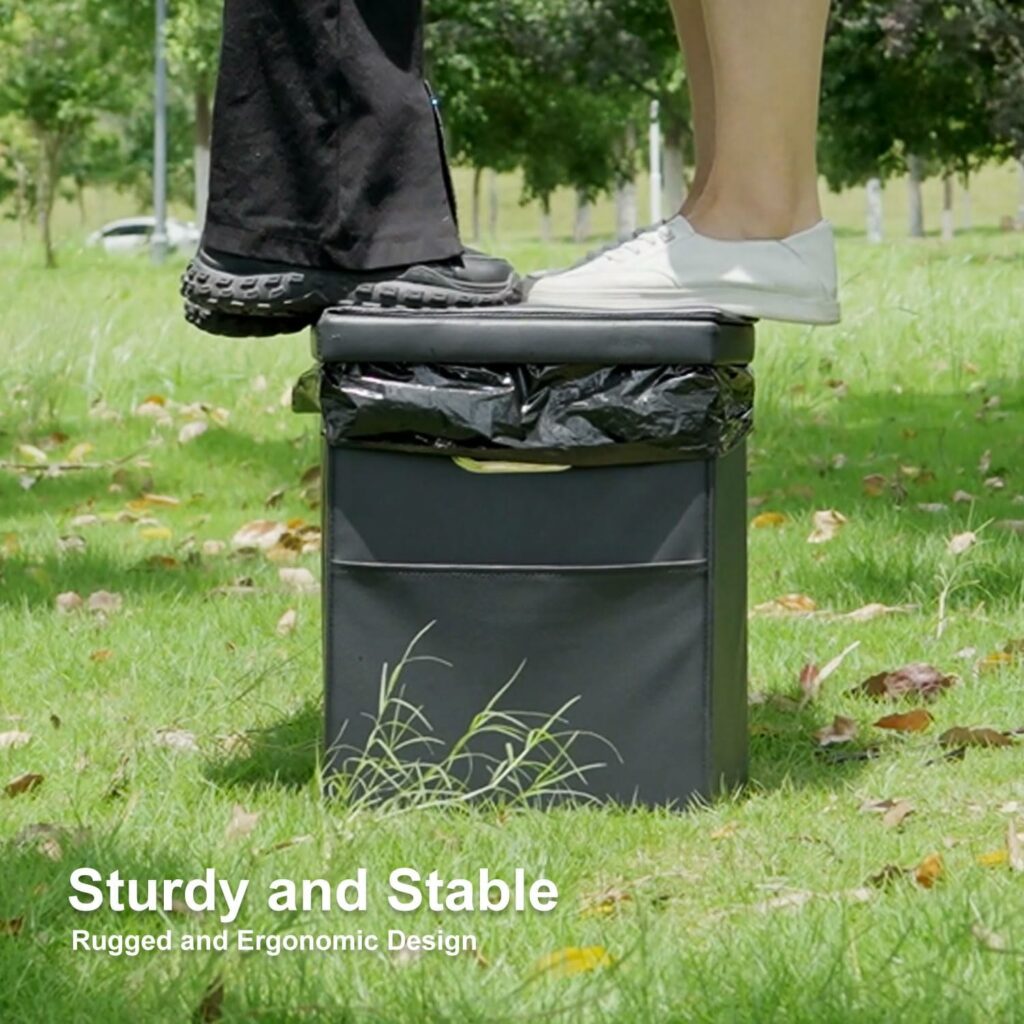
Understanding Portable Camping Toilets
Having a portable camping toilet makes outdoor adventures much more comfortable. Let’s explore the different types and determine the right size and capacity for your needs.
Types of Portable Camping Toilets
Chemical Toilets: These are popular because they use chemicals to break down waste and control odors. They include a separate waste tank and a flushing system. They are a bit heavier compared to other types.
Bucket Toilets: These are simple and easy to use. They involve a bucket with a seat attached. Sometimes, bags are used to collect waste. They’re lightweight and easy to clean.
Cassette Toilets: Often found in RVs, these have a fixed toilet bowl that connects to a removable waste tank. Easy to empty and maintain, they are a convenient choice for many.
Composting Toilets: These are eco-friendly as they compost waste without water. They are great for longer trips where managing waste sustainably is key.
Folding Toilets: These are compact and easy to transport. They fold up for storage and unfold, making them perfect for hikers and backpackers.
Choosing the Right Size and Capacity
Capacity: The waste tank size is crucial. A smaller tank may suffice for short trips or solo travelers. Families or longer trips might need a larger tank to avoid frequent emptying.
Weight: Consider the weight of the toilet, especially if you need to move it often. Lightweight options like folding toilets or bucket toilets are easier to handle.
Height: Make sure the toilet’s height is comfortable for sitting. Some models offer adjustable heights, which can be handy for different users.
Ease of Cleaning: Look for toilets with simple, easy-to-clean designs. Models with detachable parts are often easier to maintain.
Features and Convenience Factors
When choosing a portable camping toilet, it’s crucial to consider ease of use and maintenance, comfort, and design features like lightweight portability and waste management systems.
Ease of Use and Maintenance
Portable camping toilets should be simple to set up and use. A push-button flush system is a great feature for hassle-free operation.
It’s helpful to have a waste tank level indicator so you know when it needs to be emptied.
Models with double doodie bags or similar waste bags make cleanup easier. These bags can be sealed and disposed of without making a mess.
A compact design, like the luggable loo, is advantageous for storage and portability. When it comes to cleaning, I look for toilets that disassemble easily. This makes it simple to rinse them out after use.
Toilets that use chemicals to break down waste reduce odors and make emptying the tankless unpleasant.
Comfort and Design Considerations
Comfort is important for any camping toilet. A sturdy toilet seat and a full-sized lid can make a big difference. Portable toilets like the porta potti or folding seat toilets often have designs that enhance user comfort.
I find that models with a built-in toilet paper holder are more convenient. It’s one less thing I need to worry about packing separately.
Another crucial factor is the unit’s weight. Lightweight options are easier to carry, especially on long trips or when you frequently move them.
A freshwater tank for flushing improves hygiene, and having a waterless flushing system can be beneficial if water supply is limited. These features ensure that your camping experience remains comfortable and stress-free.
Installation and Portability
Installing a portable camping toilet is straightforward. Most toilets require minimal setup. You need to ensure that the waste and freshwater tanks are secure.
Some RVs and camper vans come with brackets to hold the toilet in place while driving. This prevents it from moving around, providing a stable setup during travels.
If you are using a portable camping toilet in a tent or for car camping, you place it on a flat surface. Some models come with foldable legs for extra stability. Always make sure the unit is level to avoid any spills.
Portability is a key feature of these toilets. Models like the TRIPTIPS Portable Folding Toilet are lightweight and collapsible, making them easy to pack and carry. They’re a perfect choice for backpackers and those short on space.
Popular Models and Their Weights:
| Model | Weight |
|---|---|
| TRIPTIPS Folding Toilet | 2.6 lbs |
| Thetford 365 | 9.5 lbs |
| Reliance FOLD-TO-GO | 5 lbs |
I appreciate that some toilets, such as the Thetford 365, are designed with comfort in mind—these are slightly taller, which can make a big difference during use.
Bag toilets are another portable option. They are especially useful for situations where carrying a full unit isn’t practical. To maintain hygiene standards, you just need to ensure the bags are properly disposed of.
Transporting your toilet quickly allows you to enjoy your camping trips without worrying about locating facilities, adding convenience to your outings.
Environmental Impact and Waste Disposal
Managing waste responsibly is crucial when using a portable camping toilet to minimize your environmental footprint. Different types of toilets offer varying levels of eco-friendliness, and proper disposal methods are necessary to protect natural habitats.
Biodegradable Waste Solutions
Composting toilets are an excellent option for reducing water use and supporting sustainable camping practices. They turn waste into compost, which can be environmentally friendly if correctly managed. However, maintenance can require more effort.
Wag bags or disposable waste bags are convenient for easier handling. These bags often contain chemicals that break down waste. After use, seal the bags and place them in an appropriate trash receptacle. Be sure these are disposed of at designated sites to prevent pollution.
I always ensure my waste is disposed of at approved dump stations when using portable potties. This avoids contaminating the environment. Using a garbage bag for storage until reaching a disposal site is a good practice to keep the campsite clean and minimize impact.
Opting for environmentally-friendly products and following local guidelines can help preserve the beauty of natural camping areas.
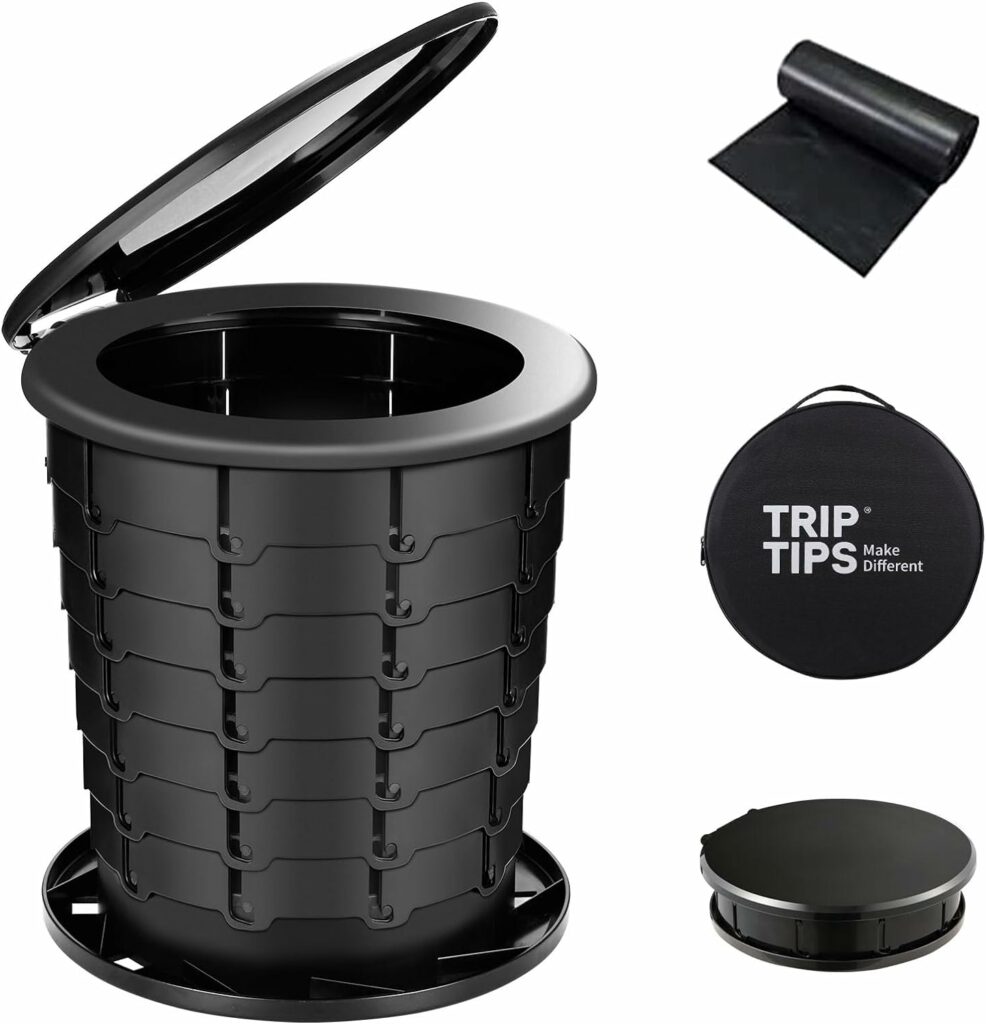
Brands and Cost Considerations
When choosing a portable camping toilet, it is essential to consider both quality and price. Some models offer high-end features, while others provide solid functionality at a lower cost.
Top Camping Toilet Models
Finding the best camping toilet depends on your needs and budget. The Dometic Portable Toilet offers a five-gallon tank and stainless steel brackets, making it a sturdy option. The TRIP TIPS Portable Folding Toilet is easy to pack and use for those who want something collapsible.
The Nature’s Head Composting Toilet is another option for eco-friendly features. Though pricier, it offers a longer-term solution for waste management.
The SereneLife Outdoor Portable Toilet is designed for comfort and ease of cleaning. It is a bit bulkier but offers a large waste tank. The Reliance Hassock Portable Self-Contained Toilet offers a more affordable solution, though it lacks some of the luxuries of higher-end models.
Finding Value for Money
Balancing cost and features is key. The Camco Portable Toilet offers a good mix of affordability and durability. It has a 5.3-gallon capacity and is easy to clean, making it a solid mid-range option.
The Stansport Portable Toilet provides basic functionality at a lower price. While not as feature-rich, it’s reliable for short trips.
Reliance Fold-To-Go presents a very affordable, lightweight choice for those on a tighter budget. However, it may not be as comfortable for extended use.
When evaluating these products, I find it useful to consider warranty and return policies. Brands like SereneLife often offer better warranties, adding value.

Practical Usage Tips
Using portable camping toilets correctly involves knowing how to operate them safely and preparing for various camping scenarios. Here’s how to ensure everything runs smoothly.
Safe Operation and Maintenance
When using a portable camping toilet, it is crucial to follow the manufacturer’s instructions. Always place the toilet on level ground to prevent tipping. Many models, including RV and compost toilets, have specific ways to flush: foot pedals, hand pumps, or electric buttons.
Regular cleaning is essential. Flush the toilet with clean water, then scrub the bowl with a brush and cleaning solution. Pay special attention to the rim. This helps prevent odors and keeps the toilet safe to use. Remember to add the correct chemicals to break down waste and control smells if you’re using a chemical toilet.
Portable buckets and backup toilets, often used by tent campers and RVers, need liners. Make sure to dispose of filled liners properly in designated waste areas. Families with children may find models with large capacities and full-sized seats more convenient.
Preparing for Different Camping Experiences
Different camping setups require different preparations. A compact and lightweight portable bucket toilet is often ideal for tent camping. These toilets can be easily carried in a car and set up in a tent. They usually require waste bags and deodorizing powder.
For RVers, a chemically treated flush toilet often works best, providing convenience and a familiar, home-like experience. These toilets can handle more waste and are easier to maintain over longer trips.
When camping with larger groups or families, consider toilets with large-capacity tanks. This reduces the need for frequent emptying. Also, having a full-sized seat makes the experience more comfortable for adults and children.
In all cases, having a backup toilet is wise. It ensures that you won’t be stuck without options even if one system fails. A compost toilet might be eco-friendly if you stay in one place longer.
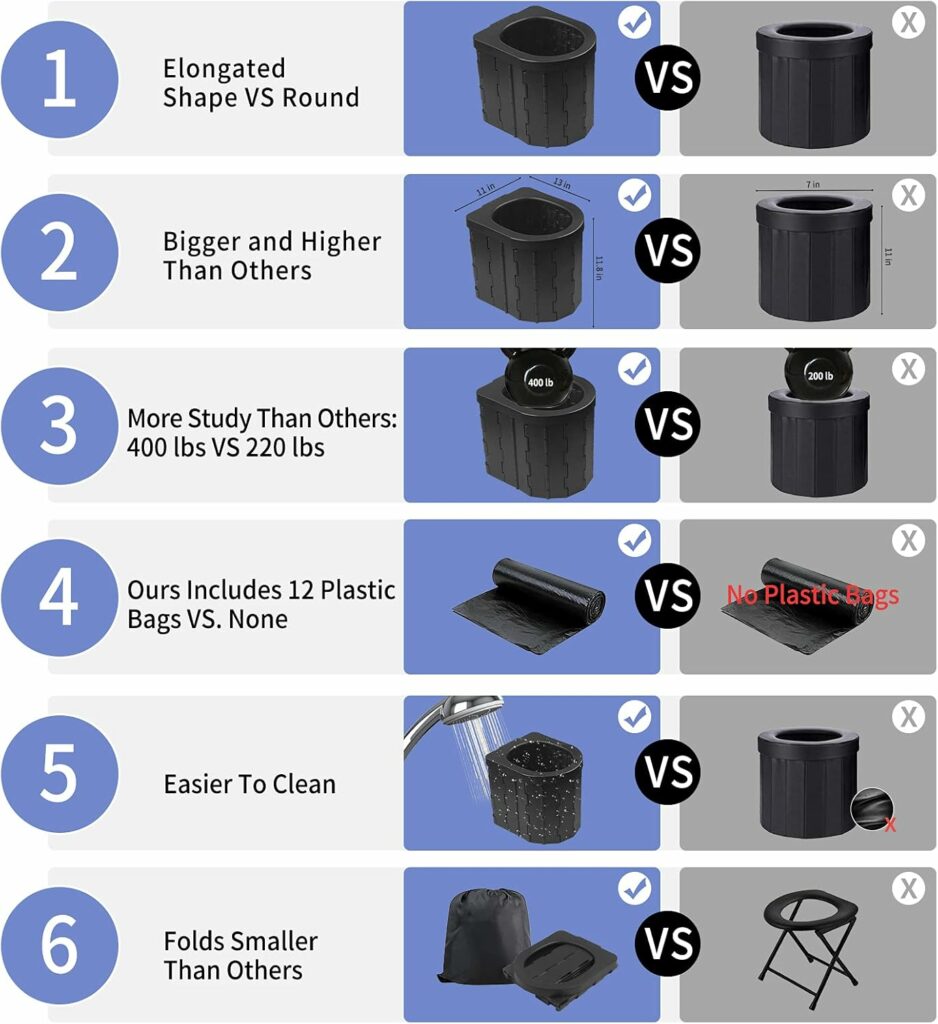
Wrapping Up
As you venture into the great outdoors, a portable camping toilet can quickly become an essential part of your gear.
By now, you should understand the options available and what to look for when choosing the right one for your needs.
Whether you’re seeking the convenience of a compact design, the comfort of a more robust model, or the eco-friendliness of a composting option, there’s a portable toilet out there to make your camping experience more enjoyable.
So, pack up your gear, head into nature, and rest easy, knowing you’ll be prepared when nature calls.
Frequently Asked Questions
Using a portable toilet when camping can make the experience much more comfortable. Below are answers to common questions about portable camping toilets to help you make the most of them on your trips.
Can you use a portable toilet inside a camping tent?
Yes, you can use a portable toilet inside a camping tent. Ensure your tent has enough ventilation to keep odors at bay.
Also, consider using a privacy tent for portable toilets to keep your main sleeping area clean and fresh.
Proper hygiene and waste disposal can make you enjoy a hassle-free camping experience.


